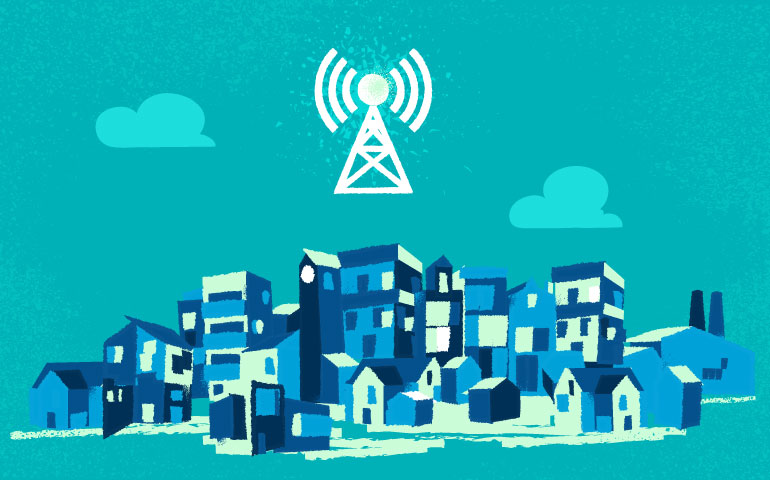
Moving Towards Greater Equality In Access to Online Learning During the Pandemic
As an online learner during the COVID-19 pandemic, I have become very reliant on educational resources and tools available on the internet to help me with my studies. For instance, research projects are mostly completed through reading publications found on the internet. Conducting research at a library seems highly unnecessary. Collaborating with classmates is also possible through email or video conferencing thereby making in-person interactions seemingly dispensable. Accessing live lessons given by my teachers or even test writing are all conducted through online tools. I have subconsciously become so dependent on the internet and digital technology that I would even be constantly searching for faster or better providers of digital tools to facilitate my online education. My daily life seemed to be adjusting to a new form of normalcy until one day, when my Wi-Fi connection at home was disconnected for a couple of days due to technical maintenance issues on the provider’s side. All of my usual school activities came to an abrupt halt and I felt stressed and uncertain. I instantly realized that I was literally living in a virtual world where I was completely out of touch with reality. I began to realize the potential scale of the problem of students missing school due to the pandemic.
If online learning is the only possible format for students to learn during the worldwide school lockdown, having access to the internet and functional devices is the only way to learn. This, however, may present a challenge to some students because access to these technologies comes with a price which can render access unattainable for those who cannot afford them.
I suspected that a lot of youths would have no choice but to be forced out of learning as a result of their inability to afford technology during the pandemic.
Unsurprisingly, according to data from UNESCO, as of April 2020, over a billion learners have transitioned to digital education and more than 460 million students across the globe had to drop out of school due to the lack of internet access, computers, or mobile devices. The data supported my suspicion. This transition to digital education caused by the pandemic has effectively highlighted the existing problem of unequal access to quality education. It has evidenced the root cause of the disparity: financial inequalities at both national and individual levels. In countries suffering from extreme poverty or isolation, technological infrastructure such as transmission cables and cellular towers are unavailable and online learning is therefore not an option. Students living in these regions simply cannot benefit from online lessons. For individual students living in the lower-income group, they either cannot continue learning or suffer from serious disadvantages in online learning due to their lack of access to proper devices or a stable Wi-Fi connection. These students struggle to join or follow their classes using the intermittent internet service which also makes it difficult to submit answers promptly during online examinations. All of these problems are further aggravated by the massive closure of publicly funded schools on which the majority of school-aged students rely in order to access other resources and support.
A few scenarios can possibly help address or at least alleviate the issue of unequal access to technology-enabled learning platforms. Companies that have developed powerful off-line technology can provide such technology for free or at a nominal cost to communities where infrastructures such as transmission cables or towers are absent. With off-line technology made available to the public through a public signal tower, students will only need to occasionally access a nearby tower to download educational resources supported by the off-line technology. They can then choose to study all the downloaded reading materials offline, whenever and wherever they prefer. The idea of making internet connectivity more accessible and affordable is key to allowing students from all socio-economic backgrounds to continue learning without interruptions caused by school closures.
Another scenario that is worthy of consideration by telecommunication companies is providing free Wi-Fi access to all students at home through a student-identity verified code during school hours as long as in-person schooling is prohibited by the lockdown. In doing so, students will not be deprived of the opportunity to learn due to their lack of financial means to pay for the high-speed internet connection.
I am confident that a number of large technology companies have developed the means, capabilities, and technical know-how to embark on this campaign to improve educational opportunities for all students. Making digital education more accessible and affordable can also minimize the incidences of social, mental, and behavioural issues experienced by students who are forced to drop out of school prematurely. This continuation of learning is also key for helping students break out of the cycle of poverty. The COVID-19 pandemic sending students to learn online has exacerbated the pre-existing issue of unequal access to quality education by allowing students’ financial situations to directly dictate their educational status and choices. This is an unfortunate situation that calls for the immediate attention and concerted efforts by governments and large corporations to address the problem. It is hoped that through their innovative and philanthropic initiatives, a more balanced learning environment with equal opportunities will be restored for all learners in the future regardless of their locality or socio-economic status.



